
views
Finding Perch

Look in North American ponds, lakes, rivers and streams. Perch are common across the US and Canada. Since they're available in so many spots, and they're relatively easy to catch, perch fishing is a popular activity among anglers and families alike. Look for perch in these places in particular: Mississippi River Great Lakes Freshwater areas in the Midwestern, Northeastern and Northwestern US Freshwater areas in British Columbia, Nova Scotia and Quebec

Fish for perch in late summer, fall and winter. Perch are active all year round, so you can technically fish them at any time of year. However, the period from late summer through early spring is the best time to catch perch.. During warmer weather, perch are found in shallower waters. In the winter, they go deeper. Ice fishing for perch is popular in winter.

Look for perch at sunrise and sunset. During these periods, perch are most active in shallow waters. They're also easy to find in morning and late afternoon. Don't bother fishing for perch at night, though, since they're rarely active once the sun goes down.

Fish near rocks and edges. Like many fish species, perch can often be found near rocky areas or edges of structures that provide shelter. They like to move among piles of rocks and wood, rather than spending time in completely open water. Look for places with an abundance of underwater structure or plentiful vegetation. If you're new to a particular lake, pond or stream, go to the local bait and tackle shop and ask where the perch like to hang out. You can often get wind of the best fishing spots by asking others with local experience.
Choosing Bait and Tackle
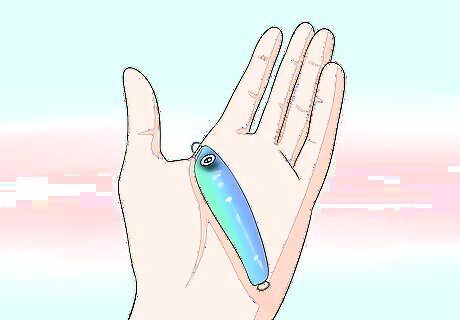
Use a light jig. Using a jig 5 to 5 ½ inches in length is best. You want to be able to feel the slightest nibble. However, if the weather is windy or you aim to catch bigger fish, you'll need a slightly heavier jig so you can maintain control.
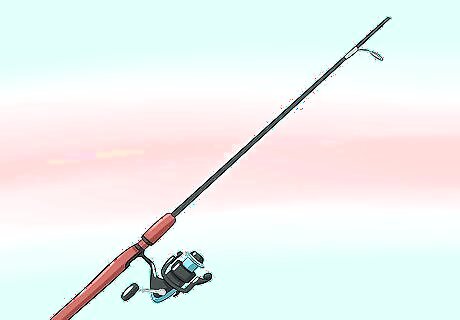
Try a basic rod and reel combination. It’s a popular choice and works well for open water fishing. There are no hard and fast rules when it comes to choosing your rod and reel combination for catching perch. Whatever you're comfortable with should work just fine when you're fishing open water from a boat. You might want to consider getting a fast action rod tip. This helps you detect subtle bites, which is helpful since perch are known for stealing bait. Get a shorter rod to use in the winter. Ice fishing rods are 3 feet (0.9 m) in length. You should choose the lightest line possible for the type of fishing you’re doing. 4 to 6 pound test line is preferred.
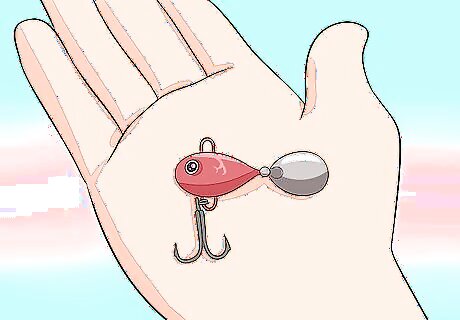
Use a small lure. Perch have small mouths and need a smaller-sized lure. There are dozens of choices, many of which have been used to great affect, but the one sixty-fourth and one thirty-second leadhead lures are the most popular to use for fishing perch. Pick out lures with an array of different-colored skirts, since there’s no telling what the perch will like on a given day.
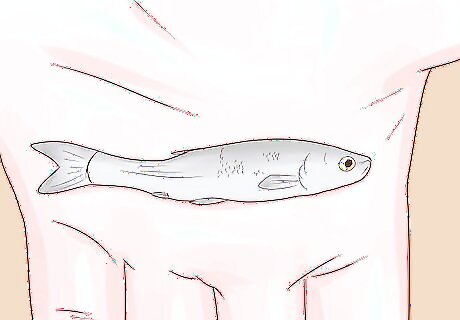
Use live bait. Perch prefer live bait, although some anglers have had success with crayfish meat. Ask around at the local bait and tackle shop to find out what perch in your particular area like to eat. These are the most popular choices: Minnows Insect larvae Night worms
Using Effective Techniques

Fish from a boat in open water when it's chilly. This makes it easier to access the deeper waters where perch like to spend time throughout the fall and winter months. It's also easier to move to a new spot if they're just not biting where you set up at first.
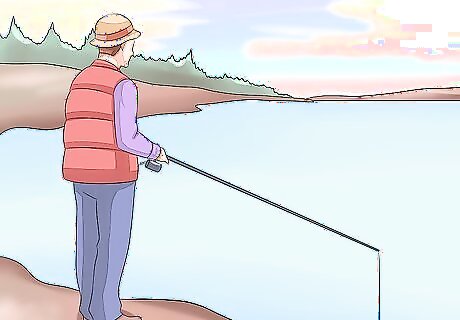
Fish from the shore near structures when it's warm. This is especially effective in early spring, when they tend to be in shallower places. Look for a spot near a rock pile, wood pile, or plenty of vegetation on the floor of the pond, lake or river. Fish near places where structures meet open water.

Fish near the bottom. No matter how shallow the water is, or what time of year, the perch will be near the bottom of the lake, pond or river you're fishing. You'll be more successful if you can position the bait there.

Consider using a sonar fishfinder. Perch commonly travel in schools and hide in the dense vegetation or mud. A good technique is to use sonar to locate the schools of yellow perch, then choose a jig that resembles the vegetation or mud in which they are hiding. Maggots with weights forcing them to sink to the bottom should be used when the schools are feeding on insects and plankton. Bobbers should be added to the line when perch are schooling in plant vegetation. This will help keep your bait still and prevent the perch from stealing it off the hook.
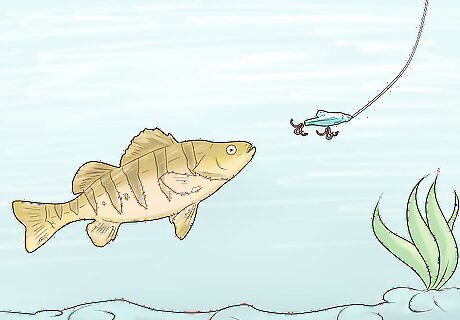
Try various techniques. You need to figure out how to best reach the perch where you are. If something isn’t working, try a new technique. Just as your bait should be adjusted to attract perch according to their current feeding location, you should also adjust your technique to fit the situation. Allow the bait to hit the bottom before wheeling back in. If you have hit in one spot and then the bites have quieted, cast in a circle around the boat. Run the boat motor, perch are attracted by the noise and vibration. Hit the rod against the bottom, then move the rod in quick little flicks to make the bait vibrate.

Land fish quickly when the action starts. You might wait for hours to get a nibble, but when you catch one, many more usually follow, since perch hang out in schools. Land each fish and get your line back out to catch more. Now you're ready to fillet your perch and cook it.














Comments
0 comment